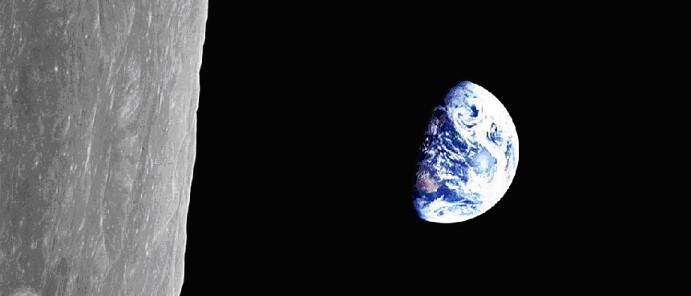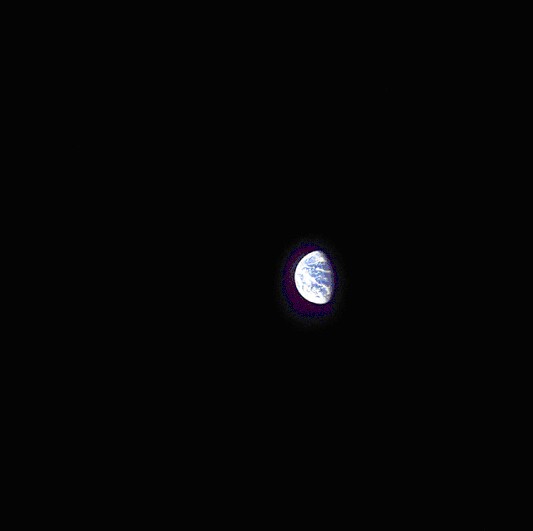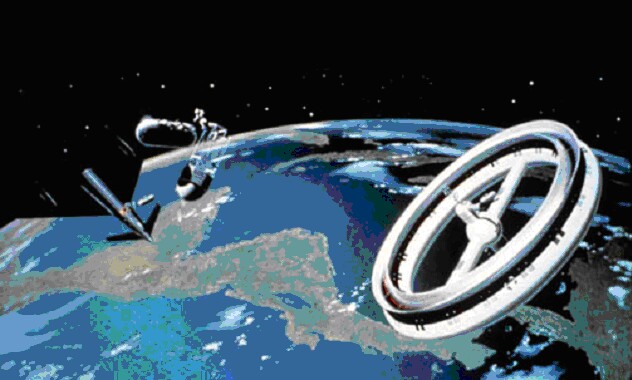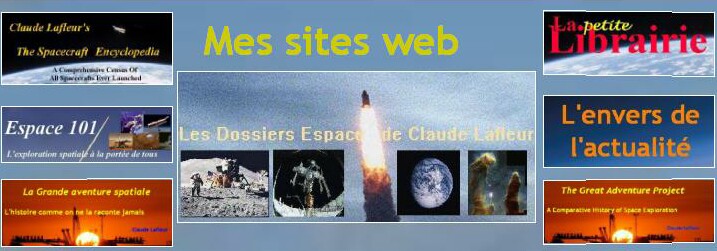One of the most profound motivations to explore space was exposed 45 years
ago by Dr. Robert Jastrow, then Director of NASA’s Goddard Institute of
Space Studies. Speaking at the American Society of Newspaper Editors on
April 20, 1963, he pointed out the idea that space exploration will be
a powerful stimulus to new ideas and technology.
“One must go back to the explorations of the late 15th Century to find
a parallel in what we are about to witness in the next thirty to fifty
years, said Dr. Jastrow. Those explorations 450 years ago and their results
awakened interest in the world and an intellectual ferment which were the
necessary foundations for the development of a scientific revolution.”
Dr. Jastrow insisted that the ideas upon which the scientific revolution
was found appeared because the Renaissance was stimulated by the Age of
Great Discoveries. “It took the explorations of the 15th and early 16th
centuries to shake established notions enough to permit the birth of modern
scientific thought,“ he said.
And then, because science and exploration acts as powerful stimulus to
progress, new ideas and concepts were implemented more and more rapidly.
“In the 19th century, the lag was rather long,” said Dr. Jastrow. “The
Scottish physicist James Clerk Maxwell published a treatise on electromagnetism
in 1864, but not until 1901 did Marconi transmit the first wireless signal
across the Atlantic. More recently, in 1932, Chadwick discovered the neutron
and Fermi set the first atomic pile only 10 years later. Still more
recently, Bardeen, Brattain and Shockley at the Bell Labs discovered the
transistor in 1948 and only six years later, the first transistorized power
amplifier appeared on the market.”
The NASA scientist considered: “I think that the history of the last one
hundred years demonstrates that we need not expect a very long wait before
space research will feed back into everyday affairs and play a role in
them.”
Since Dr. Jastrow’s lecture, 45 years had passed, and it is now possible
to see if space exploration had really accelerated new ideas and technologies
into our everyday life.
As we will see, space exploration had, in fact, reserved many surprises,
some good some bad, and has changed our life in many and somewhat unanticipated
ways.
First
technologies Implemented
At the time Dr. Jastrow submitted his ideas to reporters, NASA was already
experimenting with two promising technologies: communications and weather
satellites.
The first meteosat, TIROS 1, was launched in April 1960 and had alreday
provided 19,000 usable cloud-cover photographs during its short 78-day
life. In the following three years, five other low-orbit TIROS satellites
went into operation, each transmitting ten of thousands pictures. in August
1962 alone, TIROS V and VI discovered two Atlantic hurricanes and four
Pacific typhoons.
Today, 24/7 global survey of world hemispheres are provide by a dozen meteosats
in geosynchronous orbit. Each day on TV, we’re seeing continental
maps depicting weather patterns that so profoundly change our view that
we would be astonished to see the poverty of a 1963 weather bulletin. For
instance, just consider the pre-Space Age idea we had of Earth, without
any clouds, compared to what a meteosat shows us every day (below).
Left: Earth as
imagined before the Space Age, and as it really is.
In 1963, NASA and AT&T’s Bell Laboratory were also experimenting intercontinental
communications with satellites placed in low-Earth orbit. Telstar
1, the first privately-financed comsat was launched in July 1962 and it
operated for six months during which it relayed the first television pictures,
telephone calls and fax images between America and Europe. Then Relay
1, launched by NASA in December 1962, had operated successfully for 203
days, setting records for performance and durability for a communications
satellite. It carried out more than 1,350 communications experiments and
demonstrations. Then the first ever geosynchronous satellite, Syncom 1,
was launched by NASA in February 1963 but was lost soon thereafter. (It
was replaced six months later by Syncom 2, which successfully operated
from geo orbit.)
Today, we live in a world were high-quality, high-speed communications
of all sorts are guaranteed by dozens of commercial comsats. These
satellites change our live in many ways by transforming our world into
a global village were everything is seen live.
This is not to say that everything went as expected. For instance,
in the early days of the Space Age, we tough that the majority of transoceanic
phone calls would transit by satellites; but today they get mostly through
undersea cables. However, another unforeseen application developed:
Direct-to-Home (DTH) broadcasting which provide hundreds of TV channels
directly in our home. Who would have thought forty years ago that
a 50-cm dish fixed on the roof of a house could be in contact with a spacecraft
placed some 36,000 kilometres above?
This technology is remarkable in many ways, one of which is the fact that
it provides to citizen living under dictatorships a window of what’s going
on outside their prison. DTH technology is also used by reporters
to broadcast from isolate places, such as war and disaster zones as well
as from closed countries. It is a powerful tool for democracy and for information.

In December 1968, Apollo
8 astronauts made one of the most important discoveries
of space exploration
while taking this view of Earth “rising” from Moon’s horizon.
Revolutionizing
our vision
When Dr. Jastrow presented space exploration as a powerful stimulus to
new ideas and technology, he didn’t foresee the revolution that would happen
only five years later.
On Christmas Eve 1968, the first humans to orbit the Moon sent back memorable
pictures and comments about the Earth “rising” from the Moon’s horizon.

For Apollo 8 astronauts
near the Moon, the Earth was
filling less than one
percent of the frame they exposed.
By beaming pictures of our little blue marble lost in the blackness of
space, Apollo 8 astronauts forever changed our perspective. Our ecological
conscience took off with their sensational reports and we began to take
care of the environment that we were then polluting without any regards.
Thus, the most important discoveries we’ve made by going to the Moon was
the fragility of our home planet and the absolute necessity to take care
of it. This view from the Moon ignited a revolution – an ecological
revolution - here on Earth.
Satellite
in our daily life
As envision by Dr. Jastrow, space exploration also brought a new technology:
navigation by satellite. This technology was already envisioned at
the beginning of the Space Age to guide missiles, airplanes and ships at
sea. As early as 1959, U.S. Navy was experimenting with Transit navsat
which proved so useful that the Department of Defense deployed an operational
system of Navstar Global Positioning System. But what we didn’t expected
at the time was the civilian use of navsat. In the 1980s, DoD gave
access to its Navstar to civilian users, and a new industry was born.
Today, GPS receivers are used for hundreds of applications, including driving
in cities.
Another technology not envisioned at the beginning of the Space Age was
satellite that literally save lives. Combining communications and
positioning technologies, a network of search-and-rescue satellites was
deployed during the 1980s to locate airplanes, ships and even travelers
in danger. This SARSAT system is credited for having rescued 24,000
lives in 27 year of operations.
Cumbersome
space technology
However, not all space-based technologies became success as expected, two
of which being Earth remote sensing and cellular phone services.
In the 1980s, it was expected that we would built global cellular phone
satellite networks. Some thought that a couple of geosynchronous
satellites would served the whole planet (M-Sat) while other favoured constellations
of low-orbiting satellites (Iridium and Globalstar). But, this space-based
application took so much time to develop that, in the mean time, Earth-based
networks expanded and took the bulk of this lucrative market.
As for Earth remote sensing, with the launch of Landsat 1 in 1972 and of
Spot 1 in 1986, we were expecting this would become the second most profitable
space activities (after communications). Though remote sensing had
found some commercial applications, but not as much as expected.
Some
didn’t happened at all
As we have seen many times in history, exploration brings unanticipated
results. For instance, Columbus didn’t find a shorter route to Asia,
but he discovered new continents! Space exploration has its own examples.
In the early days, we envisioned space exploration as a kind of exotic
adventure in a “new ocean” (as said President Kennedy in 1962). We
imagined spaceships cruising the Solar System as were doing the sea ships
of 15th and 16th centuries. We envisioned spaceships leaving futuristic
Earth ports to roam across space. Many publications - such as the
famous 1950s Colliers’ series produced by Wernher von Braun and illustrated
by Chesley Bonestell - promised us gigantic construction projects such
as Earth-orbiting wheel-shaped space stations, lunar colonies and Mars
bases. But, by 2010, less than 300 piloted spaceships of small size
had been launched, carrying less than 1,500 people.
 1950s arts depicted construction workers in space suit doing their craft
as if they were working in an environment not so different than here on
Earth. But, after fifty years of space exploration, we had managed
only 350 EVAs performed by pairs of astronauts. The fact is that
nobody really anticipated how working in space would be so difficult, expansive
and dangerous.
1950s arts depicted construction workers in space suit doing their craft
as if they were working in an environment not so different than here on
Earth. But, after fifty years of space exploration, we had managed
only 350 EVAs performed by pairs of astronauts. The fact is that
nobody really anticipated how working in space would be so difficult, expansive
and dangerous.
Of course, we could say that in the 1950s, we were knowing so little about
space that our visions were naive. But so were they some twenty years
later! Remember that, following the 1973 oil crunch, some were thinking
of building gigantic Solar Power Stations (SPS) to produce kilowatts of
energy to be beamed down by microwave. And with the advent of the
Space Shuttle and its 100 $/lb. launch cost promises, we were planning
construction of large multi-purpose space facilities. Some even advocate
using Shuttle’s External Tank farms assembled in orbit as large storage
facilities. Other envision space tourism, commercial manufacturing of goods
to take advantage of weightlessness and vacuum of space, space mining of
the Moon, exploitation of asteroids and of other space resources to built
more advanced space structure.
But space is not a new ocean or a new continent to explore, to conquer,
to exploit or to colonize. Spaceflight is neither some kind of exotic
long-distance sea adventure.
In hindsight, our vision of space exploration of fifty or even thirty years
ago proved naïve compared to the realities of travelling and working
in space. Space travel is much more risky than we had expected, President
Kennedy’s new ocean prove much more daunting than our oceans to the 15th
Century courageous adventurers.
But space also proved much more beneficial here on Earth that we had envisioned.
Peacemakers
from space
Today, we have forgotten how the world was a dangerous place during the
1960s and 1970s as both the United States and the Soviet Union were on
stand-by to destroy each other with hundreds of nuclear warheads.
We were living under the suspicion, distrust and hostility of the Cold
War, the most terrifying period in our history.
Fortunately, during that time, dozens of military spy satellites played
a key role in maintaining both camps well informed. Otherwise, by
not knowing what the other was doing, one camp could have been tempted
to launch a pre-emptive strike. Spysat probably saved us from extinction.
They even became peacekeepers.
In the 1970s and 1980s, they made negotiation of arms limitation treaties
possible between U.S. and U.S.S.R., even though both sides distrust each
other. (Remember Ronald Reagan calling the Soviet the “Evil
Empire”?) By monitoring the applications of these treaties, these
“National means of verification” became peacemakers and, with time, agents
of trust-building.
Not only did spysat prevented us from annihilation but it permitted trust
to develop between the two enemies up to the point that, in the 1990s,
United States and Russia were able to commit themselves into the greatest
partnership of all time: the International Space Station.
The Space Age, which began as a political and technological race to show
which of the two systems - capitalist or communist – was the fittest, had
the unexpected result of linking both nations. What an unexpected
“powerful new idea”, Mr. Jastrow!
Also, cooperating to built ISS involved sharing some of the most sensitive
technologies developed by former rivals. It required day-to-day work
between hundreds of American and Russian experts. ISS is even sometime
crewed by former Soviet and American Air Force pilots who, otherwise, could
be confronting each other in warplanes.
The ISS partnership also could be viewed as contributing to keep peace
here on Earth today. With more and more contentious issues between
Russia and U.S. – recent Russia invasion of Georgia, U.S. planned missile
shield in Eastern Europe, Russia feeling more and more surrounded by NATO
forces, Iran and North Korea nuclear threats, etc. -, maybe if it was not
for the needs to keep ISS in operation, both superpowers might be tempted
to sever ties.
So, by going to the Moon, we became conscious that Earth is fragile, and
spysat and ISS became tools for peacemaking here on Earth -technologies
that literally revolutionized our life with breathtaking applications of
new ideas.
On
the shore of this new ocean
In his 1963 speech, Dr. Jastrow stated that: “The exploration of the Moon
has a very special role to play… because it is a relatively lifeless body.
It has no atmosphere, no oceans, nothing to wear away the record of the
history of the Solar system, and of whatever has occurred to the surface
of the Moon since its birth… For this reason, the Moon is a kind of Rosetta
Stone of the Solar System from which we can read the past. That is why
it is so interesting to scientist, he has the opportunity to find there
the record of the early history of the Solar System.”
Isn’t it sad that these comments, made 45 years ago, are as true today
as they were then? Even if we had been on the Moon six times, we
haven’t read much of this Rosetta Stone.
That does not mean we haven’t learn a lot in the last 45 years. Our vision
of the Universe, especially of the Solar system, is more accurate.
For instance, in the early days, we considered that most of the moons orbiting
other planets were piece of rocks not much interesting to explore.
But space probes show us that most of those bodies had their own landscape,
their own personalities and, in many cases, a lot to teach us. As
we see it now, the Solar System is made of at least a hundred fascinating
worlds to explore!
We also learned from planetary exploration that life is probably more abundant
than we thought. Of course, we haven’t find any trace of life in
our Solar System, but the discoveries we have made lead us to think that
it could be frequent throughout our galaxy. This finding make our
quest on planets around other starsexciting.
One important lesson to be glean from Dr. Jastrow exposé and of
45 years of space exploration is probably that the best is yet to come.
The fact is, although we have learn a lot about the Solar System, we don’t
know much about the Moon and of the hundred of other worlds in our neighbourhood.
The two hundreds space probes we have launched so far toward the planets
have done not much exploration compared to what scientists have done on
Earth. And yet, we have plenty to learn here on Earth… and so much
more throughout our Solar System.
The good news is that the bulk of discoveries is in front of us, not behind.
As Dr. Jastrow pointed out, space exploration is a powerful stimulus for
new ideas and technology, and the last 45 years confirmed it many times,
that mean the most promising ones are yet to come. Considering how
new ideas and technology had already change our life in so many ways, imagine
what the future has in store for us! |



